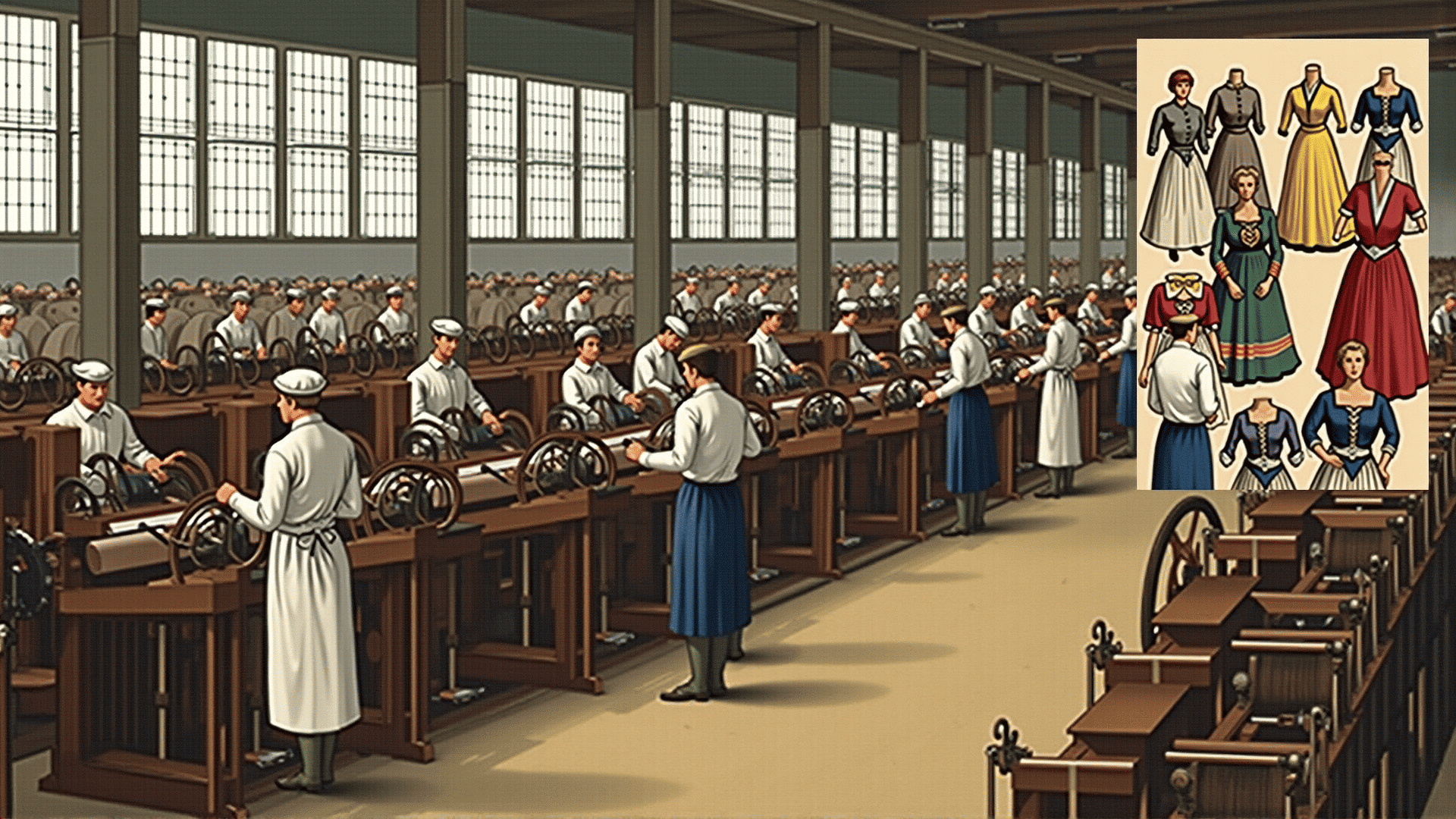The hum of machines marked a transition, altering the very fabric of American garment creation during the Industrial Revolution. This era, pulsating with innovation, not only mechanized the way garments were produced but also paved the way for a democratization of style that significantly influenced the everyday wear of Americans.
Before the onset of mechanized production, clothing in America was predominantly handcrafted, requiring significant labor and time. Artisans and home-based crafters spun yarn, wove textiles, and stitched garments with precision and care. This method, though intricate and rich in cultural value, limited the scope of personal wardrobes to a few custom pieces treasured over time.
With the arrival of the Industrial Revolution, an exciting shift emerged. Key inventions such as the cotton gin and power loom, coupled with the rapid development of textile mills, spurred changes that dramatically reshaped garment production. Mass production became possible, particularly with the integration of steam power and the introduction of assembly lines, which streamlined processes that previously took hours or even days to complete.
Textiles, once scarce and expensive, became more accessible as production soared and costs dropped. This transformation enabled a broader segment of the population to access a variety of garments, moving away from reliance on a handful of outfits. Middle class citizens were suddenly able to expand their wardrobes, and the notion of having clothing tailored to different occasions began to gain traction.
Style also underwent a metamorphosis. The potential for creating diverse textile patterns quickly and efficiently meant that individuals could express themselves through their attire in ways that were previously unattainable. Style innovation thrived in this fertile ground, with designers exploring new cuts, colors, and textiles, inspired by both local trends and international influences. As vibrant textiles and novel designs became widely available, distinct American aesthetics began to form, underpinned by a mix of practicality and emerging trends.
The role of labor cannot be overlooked in this narrative. The Industrial Revolution, while reducing production costs, also increased demand for factory workers. The garment industry burgeoned, becoming one of the largest employers in urban centers. Although factory conditions were often harsh, this opened avenues for employment on a scale not previously seen in the garment industry.
In essence, the Industrial Revolution channeled the winds of change through American garment creation, threading together innovation, style, and accessibility. This period laid the groundwork for future transformations, setting the stage for a dynamic arena where personal expression through attire became a tangible reality for many. Through machines and mechanisms, the fabric of American garment creation was not only altered but truly revolutionized.
